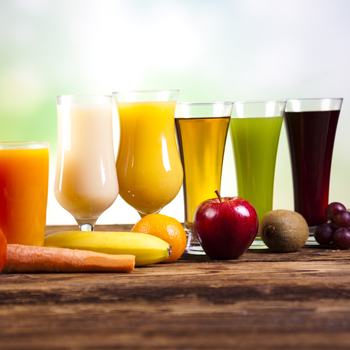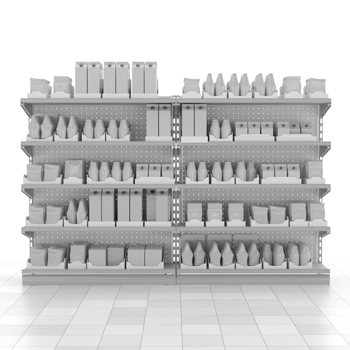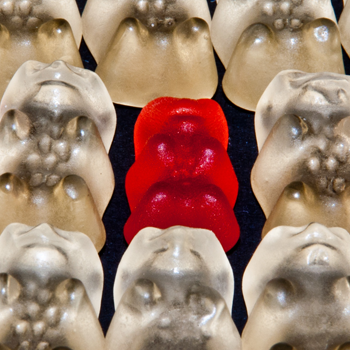ความสำคัญของการควบคุมเชื้อแลคติกแอซิดแบคทีเรียในอาหารและเครื่องดื่ม
คุณแสงรวี จงวนิช
Saengrawee Jongvanich
Senior Clinical Specialist
3M Health Care Business
sjongvanich@mmm.com
เชื้อแลคติกแอซิดแบคทีเรียเป็นแบคทีเรียที่สามารถนำมาใช้ประโยชน์ได้หลากหลาย นอกจากจะช่วยในการถนอมอาหารประเภทเนื้อสัตว์ เช่น แหนม ปลาส้มแล้ว ในปัจจุบันยังมีการพัฒนาผลิตภัณฑ์อาหารและเครื่องดื่มกลุ่ม Functional food ที่มีการใช้แลคติกแอซิดแบคทีเรียที่เป็นเชื้อกลุ่มโพรไบโอติกที่มีประโยชน์ต่อระบบทางเดินอาหาร เช่น Lactobacillus spp. ในผลิตภัณฑ์นมเปรี้ยว โยเกิร์ต หรืออาหารเสริมในรูปแบบต่างๆ โดยโพรไบโอติกจะแย่งจับพื้นที่ของเนื้อเยื่อในลำไส้ทำให้แบคทีเรียก่อโรคอื่นๆ ไม่สามารถยึดเกาะอยู่กับผนังลำไส้ได้ ช่วยลดการเกิดการติดเชื้อก่อโรคในระบบทางเดินอาหาร1
การผลิตที่มีการเติมเชื้อแลคติกแอซิดแบคทีเรียลงในผลิตภัณฑ์มีข้อกำหนดตามประกาศกระทรวงสาธารณสุข ฉบับที่ 353 เรื่องนมเปรี้ยว คือสำหรับนมเปรี้ยวที่ไม่ผ่านการฆ่าเชื้อหลังการหมัก ว่าต้องมีจุลินทรีย์ที่ใช้ในกรรมวิธีการหมัก ดังนี้ แบคทีเรีย ไม่น้อยกว่า 10,000,000 โคโลนี ต่อกรัม 2และสำหรับอาหารที่มีการใช้จุลินทรีย์โพรไบโอติก ตามประกาศกระทรวงสาธาณสุข ฉบับที่ 346 ต้องมีปริมาณจุลินทรีย์โพรไบโอติกที่มีชีวิต ไม่น้อยกว่า 106 CFU ต่ออาหาร 1 กรัม3 ทั้งนี้เพื่อเป็นการควบคุมให้มีปริมาณจุลินทรีย์ที่ต้องการในผลิตภัณฑ์ตลอดอายุการเก็บรักษา
นอกจากแลคติกแอซิดแบคทีเรียยังมีประโยชน์ในด้านคุณประโยชน์และการถนอมอาหารแล้ว ในบางกรณียังอาจทำให้อาหารมีการเสื่อมเสีย ให้รสชาติและลักษณะที่ไม่พึงประสงค์ได้ เช่นในกรณีการพบการปนเปื้อนของแลคติกแอซิดในน้ำผลไม้ เนื่องจากเชื้อแลคติกแอซิดแบคทีเรีย สามารถเจริญเติบโตและสร้างลักษณะที่ไม่พึงประสงค์4 ดังนั้น AIJN (European Fruit Juice Association) จึงกำหนดให้มีการตรวจสอบหาเชื้อแลคติกแอซิดแบคทีเรียในน้ำผักและน้ำผลไม้ รวมถึงน้ำผักและน้ำผลไม้แบบเข้มข้น5 เพื่อเป็นการควบคุมคุณภาพผลิตภัณฑ์ ลดโอกาสการเสื่อมเสียของผลิตภัณฑ์ภายหลังการผลิต
นอกจากนี้ยังมีงานวิจัยที่ศึกษาเกี่ยวกับการเสื่อมเสียของไข่เหลวพาสเจอร์ไรส์ ซึ่งพบว่ามีสาเหตุหลักจากเชื้อแลคติกแอซิดแบคทีเรีย6 ดังนั้นในโรงงานอุตสาหกรรมหลายแห่งจึงมีการตรวจประเมินเชื้อแลคติกแอซิดแบคทีเรียในไข่เหลวพาสเจอร์ไรส์ ก่อนที่จะนำไปผลิตเป็นผลิตภัณฑ์อื่นๆ ต่อไป
Lactic acid bacteria are bacteria that have a number of potential benefits including preservation of meat products such as fermented pork, and pickled fish. In recent years, there have been remarkable developments of functional foods and beverages that use lactic acid bacteria in a group of probiotic organisms beneficial to the gastrointestinal tract, like Lactobacillus spp. It has been used for fermented milks, yogurt or in various forms of food supplements. Probiotics will capture most areas of intestinal tissues, caused other pathogenic bacteria are not to be able to adhere to the intestinal wall. That helps to reduce the gastrointestinal infections1.
Food production that contains probiotic microorganisms is subject to the requirements of the notification of the Ministry of Public Health No. 353 Re: Fermented Milk stating that fermented milk that is not subject to heat treatment after fermentation must contain microorganisms used during the production as fermented bacteria not less than 10,000 colonies per one gram2. Also, notification of the Ministry of Public Health No. 346 Re: Use of Probiotic Microorganisms in Foods required viable probiotics microorganism not less than 106 CFU per one gram of food3. That is to control the number of microorganisms required in the product throughout the end of its shelf life.
Among many-sided benefits including food preservation, nevertheless, lactic acid bacteria may also produce an antibiotic effect on other organisms that might cause spoilage, unpleasant taste and characteristics of food. There have been few instances of lactic acid contaminated with fruit juices due to the growth of lactic acid bacteria that create undesirable characteristics4. Therefore, the AIJN (European Fruit Juice Association) has required an inspection of lactic acid bacteria in vegetable juices and fruit juices, including concentrated vegetable and fruit juice5 to control product quality, and to reduce a chance of product deterioration after production.
In addition, previous research on the deterioration of pasteurized liquid eggs has revealed that primarily deterioration is caused by lactic acid bacteria6. Therefore, many industries are usually evaluated lactic acid bacteria in pasteurized liquid eggs before producing further for other products.









